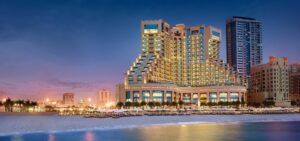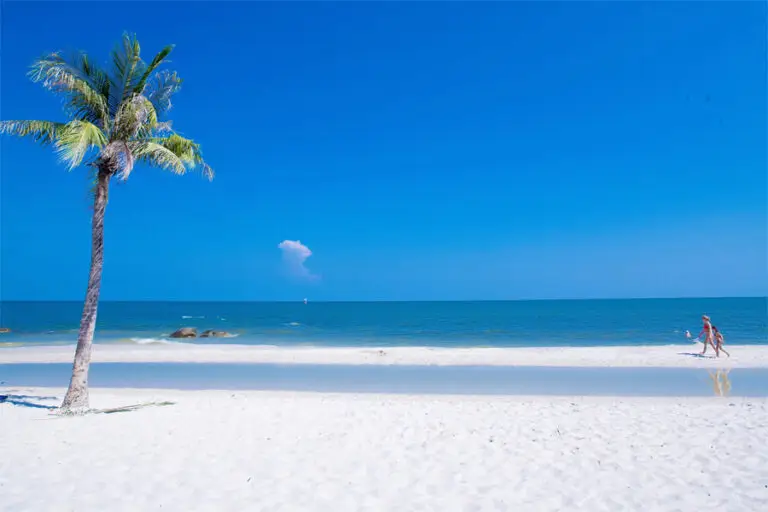Best time to visit Philippines and other weather considerations
The Philippines, an archipelago of over 7,000 islands, is known for its tropical climate, pristine beaches, and diverse ecosystems. Its weather is characterized by relatively high temperatures, high humidity, and abundant rainfall. Here’s a comprehensive guide to understanding the weather and seasons in the Philippines:

1. Overview:
The Philippines, an archipelagic gem in Southeast Asia, is blessed with a tropical maritime climate, primarily influenced by its geographical location near the equator. This positioning ensures that the country is bathed in warm sunshine for most of the year, punctuated by periods of rain. Here’s a deeper dive into the country’s climatic nuances:
-
Equatorial Influence: Being close to the equator, the Philippines enjoys relatively consistent daylight hours throughout the year, with sunrises and sunsets occurring at roughly the same time. This consistent solar influence contributes to the country’s uniformly warm temperatures.
-
Maritime Effect: Surrounded by vast bodies of water, the Philippines’ climate is also affected by the surrounding seas. This results in high humidity levels, which can make temperatures feel warmer than they actually are. The maritime influence also ensures that even during the hottest months, coastal areas benefit from cooling sea breezes.
-
Topographical Impact: The diverse topography of the Philippines, from mountainous terrains to flat coastal areas, plays a role in the microclimates observed in different parts of the country. For instance, areas in higher altitudes like Baguio, often referred to as the “Summer Capital,” experience cooler temperatures than the low-lying regions.
-
Two Dominant Seasons: The Philippine climate is broadly categorized into two main seasons. The “dry season” is characterized by clear skies, scorching sun, and minimal rainfall, making it ideal for beach outings and outdoor explorations. In contrast, the “wet season” brings with it torrential rains, cooler temperatures, and, occasionally, typhoons. These typhoons, while a natural part of the Philippine climate, require residents and visitors to take necessary precautions.
-
Cultural and Economic Implications: The distinct seasons have shaped the country’s culture, festivities, and even its agriculture. For instance, the dry season is a time for colorful festivals, while the wet season is crucial for crops like rice and corn.
2. Dry Season (Amihan) – November to April:
Temperature: The dry season sees daytime temperatures ranging from a pleasant 25°C to a warmer 32°C (77°F to 90°F). Nights are cooler, especially in the higher altitudes, making it comfortable for travelers.
Characteristics: The Amihan season is characterized by the northeast winds, which bring cooler and drier air from the Asian mainland. These winds give the season its name and are responsible for the lower humidity levels and the absence of rain, making the climate particularly enjoyable.
Flora and Fauna: The dry season is when many of the country’s indigenous plants bloom, painting landscapes in vibrant colors. It’s also a great time for birdwatching as many migratory birds visit the Philippines.
Popular Activities:
- Beach Hopping: With over 7,000 islands, the Philippines offers a plethora of pristine beaches. Popular destinations like Boracay, Palawan, and Siargao see a surge in visitors during this time.
- Festivals: The dry season coincides with several cultural festivities. Sinulog in Cebu celebrates the Santo Niño, while Panagbenga, the flower festival in Baguio, showcases beautiful flower floats.
- Island Exploration: Apart from the beaches, this is an excellent time to explore the country’s many natural attractions, from the Chocolate Hills in Bohol to the Tubbataha Reefs Natural Park.
- Mountain Treks: For those seeking cooler temperatures, trekking in areas like Mt. Pulag or experiencing the cool breeze of Tagaytay can be refreshing.
Travel Tip: While the dry season is undoubtedly the best time for tourists, it’s also the peak season. Popular destinations can get crowded, especially during significant holidays like Christmas, New Year, and Holy Week. Prices for accommodations and activities might surge. It’s advisable to plan your itinerary, make reservations, and book tickets in advance to avoid last-minute hassles. Also, while the weather is generally sunny, always stay hydrated and wear sunscreen to protect against the tropical sun.
3. Wet Season (Habagat) – May to October:
Temperature: During the wet season, temperatures can vary from a cooler 22°C during rainy days to a humid 32°C (72°F to 90°F) on days when the sun peeks through. The humidity levels are higher, making the atmosphere feel warmer than it actually is.
Characteristics: The Habagat season is dominated by the southwest monsoon winds, which usher in moist air from the Indian Ocean. This results in consistent heavy rainfall, especially in the western parts of the country. The months of June to September are particularly wet, with August usually being the wettest month. This season also sees the Philippines being affected by several typhoons, some of which can be quite severe.
Flora and Fauna: The wet season is a time of rejuvenation for the country’s flora. The landscapes turn a deeper shade of green, and waterfalls and rivers are at their fullest. It’s also a breeding season for many aquatic animals.
Popular Activities:
- Indoor Activities: This is a great time to explore Manila’s shopping malls, which are among the largest in the world. They offer a variety of entertainment options, from cinemas to bowling alleys.
- Spa Days: The sound of rain outside complements a relaxing day at one of the country’s numerous spas. Traditional Filipino massages, known as “Hilot,” are a must-try.
- Museum Visits: Dive into the rich history and culture of the Philippines by visiting museums like the National Museum in Manila or the Ayala Museum in Makati.
- Food Trips: The rainy season is the perfect time to indulge in Filipino comfort food. Warm up with dishes like “Arroz Caldo” (rice porridge) or “Sinigang” (sour soup).
- Lush Landscapes: For photographers and nature lovers, the wet season offers lush, verdant landscapes and roaring waterfalls, making for some great photo opportunities.
Travel Tip: While the wet season brings its own charm, it’s essential to be prepared. Always carry an umbrella or a raincoat when stepping out. Waterproof bags or pouches can protect your gadgets and important documents. If you’re planning to travel during these months, keep an eye on weather forecasts, especially for typhoon warnings. Some regions might experience flooding or landslides, so it’s crucial to stay informed and plan your travels accordingly. Additionally, some remote areas or islands might be harder to access due to rough sea conditions, so always check transportation availability in advance.
4. Transitional Periods:
May:
- Temperature and Climate: May is often considered the tail end of the dry season and is characterized by soaring temperatures. The mercury can sometimes tip beyond 35°C (95°F), making it one of the hottest months of the year. The humidity is also on the rise, preparing the atmosphere for the upcoming monsoon.
- Festivities: The month of May is synonymous with the colorful “Flores de Mayo” (Flowers of May) festival, which is celebrated throughout the country. This Catholic festival involves processions, floral offerings, and the re-enactment of the search for the Holy Cross by Queen Helena and her son, the newly converted emperor Constantine.
- Travel Recommendations: With the sun shining bright, it’s an ideal time for beach vacations. Popular destinations like Boracay, Palawan, and Siargao see a surge in tourists. However, it’s also essential to stay hydrated and use sun protection due to the intense heat. Evening beach parties and bonfires are popular as the nights are warmer.
- Agriculture: For farmers, May is crucial as they prepare their fields for the planting season, anticipating the rains that June will bring.
October:
- Temperature and Climate: October marks the transition from the wet to the dry season. While the month starts with the remnants of the southwest monsoon, it gradually sees a decline in rainfall. The weather becomes cooler, especially towards the end of the month, with temperatures averaging around 26°C to 30°C (79°F to 86°F).
- Flora and Fauna: The landscapes are still lush and green from the preceding rainy months. It’s also a time when many local fruits, like the “lanzones,” are in season.
- Travel Recommendations: October can be a sweet spot for travelers. The cooler weather and reduced rainfall make it conducive for both beach vacations and city tours. The seas start to calm down, making island-hopping more accessible. However, it’s always a good idea to pack a light raincoat or umbrella, as occasional showers can still occur.
- Festivities: October is the month of the “Lanzones Festival” in Camiguin, celebrating the bountiful harvest of the lanzones fruit. The festival is marked by street dancing, parades, and various agricultural showcases.
- Agricultural Transition: As the rains recede, farmers begin their harvest season, especially for crops like rice and corn, ensuring they are collected before any unexpected late-season rains.
5. Regional Variations:
Luzon:
- Climate Patterns: Being the northernmost region, Luzon witnesses a pronounced distinction between its wet and dry seasons. While the coastal areas experience typical tropical conditions, the inland and mountainous regions have varied microclimates.
- Cordillera Region: Nestled in the highlands, areas like Baguio, Sagada, and Banaue have a temperate climate. Temperatures can drop significantly at night, especially from December to February. The “Panagbenga” or Flower Festival in Baguio, celebrated in February, is a testament to its cooler climate, showcasing beautiful flower floats and street dancing.
- Lowlands and Coastal Areas: Regions like Metro Manila and the Ilocos provinces can get quite hot and humid during the dry season, with temperatures occasionally soaring above 35°C (95°F). The Bicol region, on the other hand, is known for its frequent interaction with typhoons due to its eastern location.
Visayas:
- Climate Patterns: The central part of the Philippines enjoys a milder climate. While it still has wet and dry seasons, the transitions are less abrupt, and temperatures remain relatively consistent.
- Island Variations: Being an archipelago, the Visayas region comprises several islands, each with its microclimate. For instance, while Bohol might experience sunny weather, neighboring Cebu might witness a rain shower.
- Festivals and Climate: The Sinulog Festival in Cebu, held in January, often enjoys pleasant weather, making it one of the most attended festivals in the country. The region’s milder climate also makes it a favorite for beachgoers, with destinations like Boracay being popular year-round.
Mindanao:
- Climate Patterns: Mindanao boasts a more equatorial climate, meaning rainfall is more evenly distributed throughout the year. While it still has a wetter season, it doesn’t experience the same intensity of monsoons as the northern regions.
- Typhoon Occurrence: Being closer to the equator, Mindanao is less affected by typhoons. However, the eastern parts can occasionally experience tropical disturbances.
- Cultural and Climate Fusion: The region’s consistent climate has influenced its agriculture, festivals, and way of life. Davao, known for its durian fruit, celebrates the “Kadayawan Festival” in August, highlighting its bountiful harvest and indigenous cultures. The festival often enjoys warm weather with occasional rain showers.
- Mountain Ranges: Areas like Bukidnon, located in the central part of Mindanao, have cooler climates due to their elevation. These regions are often enveloped in mist and are known for their vast pineapple and vegetable plantations.
6. Typhoons:
Geographical Vulnerability: The Philippines, being an archipelago situated in the Pacific typhoon belt, is naturally susceptible to tropical cyclones. Its geographical location, combined with its warm surrounding waters, makes it a hotspot for typhoon formation and landfall.
Frequency and Intensity: On average, the country grapples with around 20 typhoons annually. While not all of these make landfall, those that do can range from moderate tropical storms to intense super typhoons. The strength and impact of these typhoons can vary, with some causing significant damage to infrastructure, agriculture, and even leading to loss of life.
Peak Season: The months of August to October are considered the peak of the typhoon season. During this period, the frequency and intensity of storms tend to increase. September, in particular, often sees the highest number of typhoon occurrences.
Preparedness and Response: Given its vulnerability, the Philippines has developed robust early warning systems and disaster response mechanisms. Local government units, in collaboration with national agencies, work tirelessly to ensure timely evacuations, relief distribution, and post-disaster rehabilitation. Travelers are advised to stay updated with advisories from the Philippine Atmospheric, Geophysical, and Astronomical Services Administration (PAGASA) – the country’s official weather agency.
Impact on Travel: Typhoons can disrupt travel plans, leading to flight cancellations, ferry suspensions, and road blockages. Tourist destinations, especially beach resorts and island getaways, might temporarily close during severe weather conditions. It’s essential for travelers to have flexible plans, secure travel insurance, and maintain open communication with their accommodation providers and tour operators.
Safety Tips: If you find yourself in the Philippines during a typhoon:
- Stay indoors and avoid coastal areas.
- Ensure you have an emergency kit with essentials like water, food, flashlight, and a first-aid kit.
- Stay informed by monitoring local news and weather updates.
- Follow instructions from local authorities, especially if evacuation orders are given.
Post-Typhoon Beauty: While typhoons can bring about immediate challenges, the aftermath often reveals a rejuvenated landscape. The rains nourish the land, resulting in lush greenery, cascading waterfalls, and rivers brimming with life. It’s a testament to the resilience of nature and the Filipino spirit.
7. Travel Tips:
Packing:
- Clothing: Opt for lightweight, breathable fabrics like cotton and linen to stay comfortable in the tropical climate. While short-sleeved clothing is perfect for daytime, long-sleeved attire can protect against mosquitoes during the evening.
- Footwear: Consider packing comfortable walking shoes for city tours and flip-flops or sandals for beach outings. Waterproof shoes or sandals can be beneficial during the rainy season.
- Accessories: A hat and sunglasses are essential for protection against the sun. A lightweight scarf or shawl can be versatile, serving as a cover-up on beaches or in religious sites.
- Essentials: Don’t forget sunscreen with high SPF, insect repellent, and a reusable water bottle. A compact umbrella or a foldable raincoat can be a lifesaver during unexpected rain showers.
Stay Hydrated:
- Water Intake: The tropical climate, combined with extensive walking or outdoor activities, can lead to dehydration. Ensure you drink plenty of water throughout the day.
- Safe Drinking: While tap water in major cities is generally safe for bathing and cleaning, it’s advisable to drink bottled or purified water. Many accommodations provide complimentary bottled water for guests.
Safety:
- Flooding: During the wet season, certain areas, especially low-lying regions in Metro Manila, can experience flash floods after heavy rainfall. Stay updated with local news and avoid traveling during heavy downpours.
- Transport: If you need to travel during rainy conditions, be prepared for potential traffic delays. When using public transportation, such as jeepneys or tricycles, ensure they have proper shelter from the rain.
- Health Precautions: Wet seasons can see a rise in mosquito-borne diseases like dengue fever. Use insect repellent and wear protective clothing, especially during dawn and dusk when mosquitoes are most active.
- Emergency Contacts: Always have a list of emergency contacts, including local police, medical facilities, and your country’s embassy or consulate.
Local Etiquette:
- Dress Code: While the Philippines is generally laid-back, it’s essential to dress modestly when visiting religious sites or attending formal events.
- Communication: Filipinos are known for their hospitality and warmth. A simple “Salamat” (Thank you) or “Magandang Araw” (Good Day) in the local language can go a long way in building rapport.
Connectivity:
- SIM Cards: Consider purchasing a local SIM card upon arrival for affordable data and call rates. Major telecom providers have kiosks at airports for easy access.
- Wi-Fi Access: Most hotels, restaurants, and malls offer free Wi-Fi. However, it’s always good to have mobile data for on-the-go connectivity, especially when exploring remote areas.
Conclusion:
The Philippines, with its rich tapestry of culture, history, and natural beauty, offers a unique travel experience, and Manila stands as a testament to this diversity. From the historical corridors of Intramuros to the bustling markets of Divisoria, from the serene landscapes of Rizal Park to the vibrant nightlife, Manila encapsulates the spirit of the Philippines.
Understanding the country’s weather patterns and being prepared can enhance your journey, ensuring you make the most of what this vibrant capital has to offer. Whether you’re a history buff, a nature lover, or someone seeking urban adventures, Manila promises a blend of experiences that resonate with every traveler’s soul. So, as you set out to explore the heart of the Philippines, embrace its warmth, savor its flavors, and immerse yourself in its stories. Happy travels!









